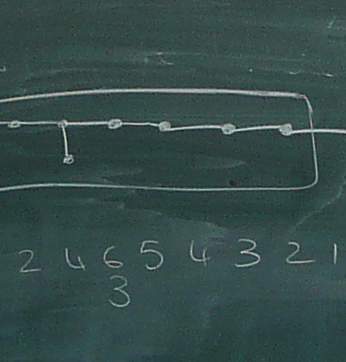INCIDENCE GEOMETRY AND BUILDINGS 2012

February 6-10, 2012 Organizers: Bart De Bruyn, |
Gary Ebert |
Subplane structure of finite projective planesA celebrated result of R.H. Bruck states that if a projective plane of order \(n\) has a subplane of order \(m\), then \(n=m^2\) or \(n \ge m^2+m\). In the former case such a subplane is called a Baer subplane. In the latter case, if equality were achieved in the stated inequality, then the ambient plane would necessarily have an order which is not a prime power. No such examples are known. In the classical setting the Desarguesian projective plane of order \(q^2\) has \(q^3(q^3+1)(q^2+1)\) Baer subplanes. It is not known whether or not it is true that among all projective planes of order \(q^2\), the Desarguesian plane has the greatest number of Baer subplanes. Perhaps somewhat surprisingly, this is not true in the affine setting. All known counter-examples are affine semifield planes. The strongest known related result in the projective setting states that a finite projective plane of square order is Desarguesian if and only if every quadrangle lies on a unique Baer subplane. The proof uses the Classification Theorem of Finite Simple Groups. It should be noted that it is not known if every square order projective plane has a Baer subplane. On the other end of the spectrum subplanes of order two are typically called Fano subplanes. Hanna Neumann showed that the Hall planes contain quadrangles with collinear diagonal points as well as quadrangles with non-collinear diagonal points. In particular, this shows that the Hall planes contain Fano subplanes. It is now generally believed that all finite non-Desarguesian projective planes contain Fano subplanes. On the other hand, a classical result of Gleason states that a finite projective plane in which every quadrangle has collinear diagonal points must be Desarguesian. Thus the conjecture actually is that every finite non-Desarguesian projective plane contains quadrangles with collinear diagonal points and quadrangles with non-collinear diagonal points. The above conjecture is often attributed to Neumann (although it does not appear in any of her published work), who proved it to be true for the Hall planes. It is now known to be true for many additional infinite families of projective planes, including the Hughes planes, the Figueroa planes, and all subregular planes of order \(q^2\) with index less than \((q-1)/4\). The latter family includes the Hall planes but not the regular nearfield planes, an omission that will be addressed in this talk. We also discuss the existence of subplanes of order three in non-Desarguesian projective planes. A recent result of Caliskan and Moorhouse shows that any Hughes plane of order \(q^2\) has a subplane of order \(3\) provided \(q \equiv 2 {\pmod 3}\). It is not known if this result is true for \(q \equiv 1 {\pmod 3}\), and no such examples are known. Here we discuss the situation in Figueroa planes of order \(q^3\), where we show that subplanes of order \(3\) exist when \(q\) is odd. An exhaustive computer search shows that the Figueroa plane of order \(64\) does not contain a subplane of order \(3\). |